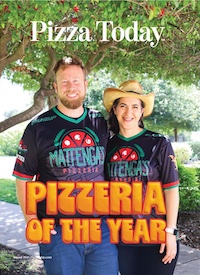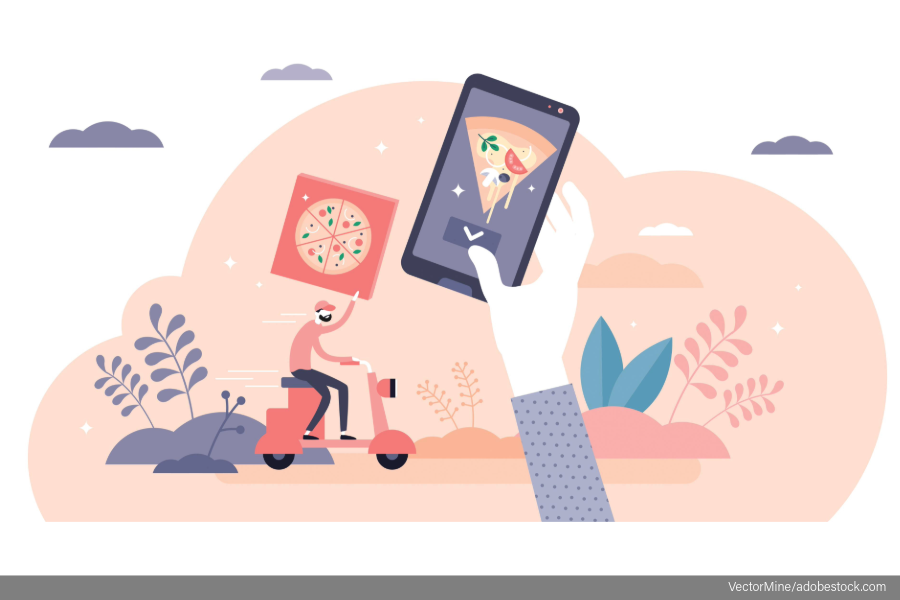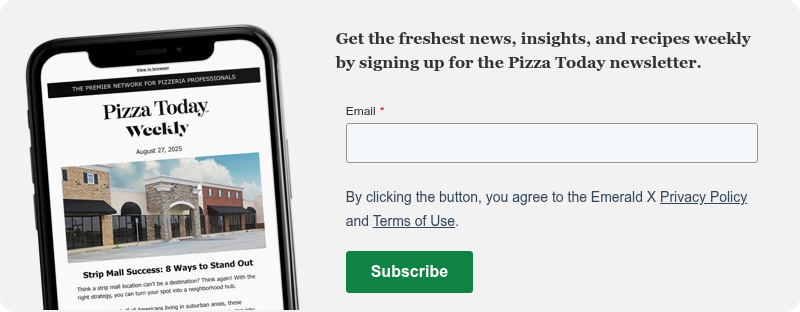Build out your restaurant ordering app to engage with your customers
Third-party ordering apps have found enormous success and restaurant apps can too. It may be time to develop or update your first-party channel to capture app users.
The reason? Food carryout and delivery apps have become a daily or weekly habit for many Americans. Two-thirds of consumers have used a food-ordering app at least once for takeout, delivery or both, according to the Consumer Food Insights Report from Purdue University. The study also found that 45 percent of consumers use food-ordering apps at least once per week.
The good news is a majority of consumers (58 percent) would rather order directly from a restaurant, according to an NCR Voyix’s 2025 Customer Experience Report. The study also found that the reason consumers order directly included convenience, customization and loyalty incentives.
Consumers, especially those 18-44, have become accustomed to the convenience, speed, order tracking and ease of ordering that come with third-party apps. Those features are now readily available for restaurant mobile apps.
Atlanta, Georgia-based Blaze Pizza and Pittsburgh, Pennsylvania-based Vocelli Pizza recently updated their mobile app experiences with different goals in mind.
Blaze Pizza launched its first mobile ordering app in 2016. What was state of the art then has been updated and enhanced with advances such as push notifications and a news feed. This year, though, it was time for the fast-casual pizza chain to overhaul its app strategy and launch a new ordering and loyalty app with Thanx. “We knew we had outgrown our previous platform,” says Vice President of Marketing Casey Terrell. “It was highly customized, difficult to maintain, and slowed down our ability to innovate. With digital now accounting for more than a third of our traffic – and our goal to push that to 50 percent or higher – we needed a system that could evolve with us. The timing was right because our brand has been undergoing a broader transformation – from menu innovation to store redesign – and this new app is a foundational piece of that digital modernization strategy.”
Flexibility and ease of use were top priorities for the Blaze team when building the app. “We needed a loyalty and ordering system that could be updated in real time, without months of development,” Terrell says. “Features like card-linked loyalty, in-app exclusives, and personalized messaging were critical to improving the guest experience. We also wanted a more scalable platform that could reduce costs and allow us to move fast without the operational friction of a custom-built solution.”
Blaze Pizza’s app needed the flexibility to change features, settings and information quickly. “For multi-unit pizza chains, the key is launching ordering apps that can evolve as quickly as the business itself,” says Thanx CEO Zach Goldstein. “Traditional custom apps are often complex, costly and slow to innovate. Whether it’s updating your menu for local tastes, rolling out a new offer overnight, or personalizing rewards for your most loyal slice lovers, modern tech should make those things easy – not harder. The days of being locked into clunky, custom systems are over.”
When Toni Bianco joined Vocelli Pizza as CEO over a year ago, he knew it was time to enhance the pizza chain’s mobile experience, while also honing in on the macro scope of engagement and integration.
“We saw an opportunity to improve the customer experience by making it more relevant and seamless across all channels,” he says. “By partnering with LOKE – a customer-engagement engine focused on personalization, payments, and ordering – we’ve been able to deliver a unified digital experience that better reflects what today’s guests expect.”
He continues, “We needed the ability to deliver personalized experiences not just through e-mail and SMS, but directly within our mobile app and website. Location-based marketing, customer segmentation and integrated campaign tools were also critical to reaching customers with the right message at the right time.”
After nine months in development, Vocelli Pizza rolled out its new digital footprint and ordering app. “We can now leverage customer data more effectively to deliver relevant content and offers in real time,” Bianco says. “That includes personalizing the experience across our digital assets – from app to web to messaging – improving customer satisfaction and ultimately driving higher sales.”
The key to building out your restaurant apps lies in the strategy and planning. Apps are not one-size-fits-all. Evaluate the needs of your customers, the systems you currently have in place, your engagement and marketing strategy and how you will encourage customers to use your app as their go-to dining choice.
Marketing & Conversion to Your Ordering App
A major component of incorporating a new ordering app into your restaurant is marketing it and getting people to download the app and use it frequently. One aspect of your strategy should include converting third-party customers to use your restaurant’s app. Lead with your strengths.
Here are a few marketing ideas to convert third-party users to your restaurant’s ordering app:
- Market your app to your e-mail and text lists.
- Offer something special to your loyalty members.
- Put a QR code on your pizza boxes and packaging to lead customers directly to a download.
- Don’t forget to promote your app on your digital and paper receipts and in store.
- Train your staff to promote the app.
- Run social media campaigns with specials and promo codes for app users.
- If available, you can also run geofencing ads to target new customers.
Denise Greer is Executive Editor at Pizza Today.
 Read the August 2025 Issue of Pizza Today Magazine
Read the August 2025 Issue of Pizza Today Magazine
In this issue, we announce Pizza Today’s 2025 Pizzeria of the Year. Find out how the owners turned a failing pizzeria purchase into a fast-growing pizza business. Learn how to make a sourdough starter. It’s Green Season! Green Chile, that is. Explore menu ideas that add New Mexican flavors to your pizza. Find out which strip mall locations work best for pizzerias – and how to maximize traffic. Discover why pizzerias are going with custom mobile apps to capture sales and return visits. Tap into addictive bar menu options to increase check averages. Go to the August Issue.



